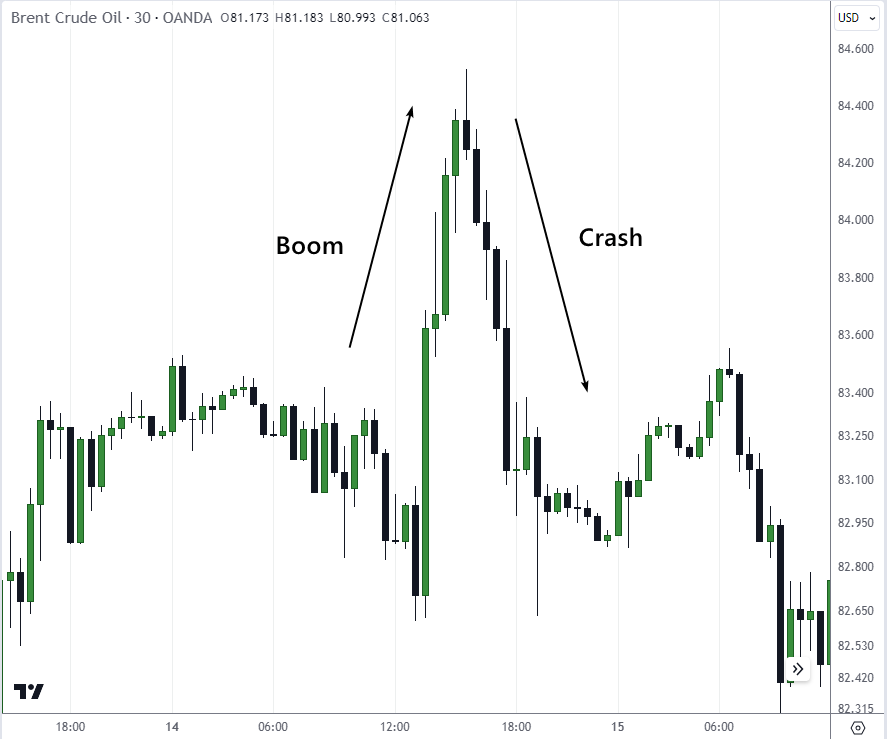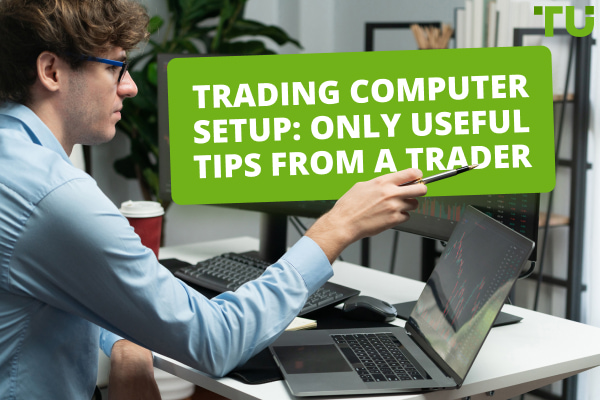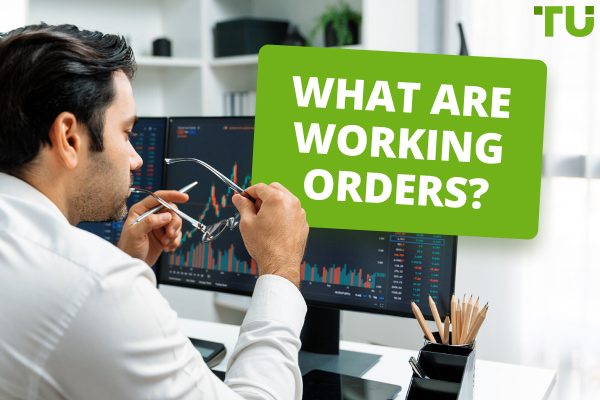What Is Boom And Crash Trading?
Boom and Crash in trading can be used in 2 cases:
-
A trading pattern that consists of a sharp rise in price (Boom) followed by a fall (Crash)
-
Boom and Crash indices - synthetic financial instruments offered by some brokers
A boom and crash in trading refers to a sharp rise in the price of a financial asset, called a “boom”, and its subsequent steep fall, or “crash”. In this article, Traders Union looks at what a boom and crash trade is, explains what the boom and crash index is, breaks down what influences boom and crash in trading, and then provides some tips for trading boom and crash.
-
What does a boom crash mean?
Boom and crash refers to a sudden spike and then fall in price movements of any given asset. It is also the name of a set of synthetic indices offered by broker Deriv.
-
Which indicator is best for boom and crash?
No indicator can predict the beginning of a boom and the beginning of a crash. Whichever indicator you use, each of them will show extreme changes in readings, which indicates the emergence of strong momentum.
-
How do you catch a boom and crash?
The use of scalping strategies after the publication of important news that lead to the formation of impulsive price movements can be considered one of the reasonable ways to “catch booms and crashes”.
-
Should I trade Boom and Crash?
It is not recommended for beginner traders to trade Boom and Crash. Although the indices can be quite lucrative for some, price movements are incredibly volatile and can cause a trader to quickly lose all of their money. Additionally, a random number generator dictates where prices will go next, meaning that trading Boom and Crash does not involve the same level of expertise that comes with being a seasoned trader and learning to understand the market.
What is a boom and crash trade?
A boom in trading is a sudden spike in an asset’s price. Traders can trade a boom by entering a trade as the price is moving upwards, trying to enter before the trend suddenly reverses and the price drops downward. When the boom, or spike, ends, then the fall begins, which is referred to as the “crash”. If you’ve ever heard the expression “what goes up, must come down”, think of a boom and crash like that. When there is a sudden boom, traders anticipate the crash. To successfully trade a boom and crash, traders aim to enter before the boom ends, and sell before the crash begins.
In the chart below, we can see a boom and crash scenario. The ideal time for a trader to enter a trade here would be when the price is at roughly 82.700. The boom ends at 84.400, which would be an optimal time for the trader to sell, before the crash begins. As you can see, the boom and crash take place over an incredibly short period of time.

Example of the Boom and Crash pattern
The Boom and Crash pattern is essentially the same as the Pump and Dump pattern used among crypto traders.
Best Forex brokers


What influences boom and crash in trading
There are several factors that can lead to booms and crashes in trading:
-
News. Major news events, economic releases, or geopolitical developments can trigger sudden market movements, leading to either a boom or a crash. For example, positive economic data may cause a boom, while events such as unexpected geopolitical tensions could result in a crash.
-
Mass emotional changes. Mass shifts in market sentiment, driven by fear, greed, or sudden market realizations, can cause a rapid change in buying or selling behavior, whether that be in traders or consumers. As an example, widespread panic selling due to a sudden economic downturn could result in a crash, while a surge in positive sentiment might lead to a boom.
-
Big capital trades. Large trades executed by institutional investors or significant market players (sometimes referred to as “whales”) can impact market liquidity and lead to rapid price movements. For example, a massive sell-off by a major crypto holder could trigger a price crash, while substantial buying from large institutional investors can lead to a big boom.
-
Manipulations on thin markets. Thinly traded markets which have less liquidity are more susceptible to being manipulated. Traders engaging in stop-loss hunting for example, can trigger sudden downward price movements. For example, deliberate triggering of stop-loss orders by large traders could lead to a rapid decline (crash) or spike (boom) in prices.
Boom and crash trading tips
Buying the boom
-
Identify strong market conditions. Look for a strong market backdrop, such as a breakout from a consolidation zone or a sustained uptrend. Analyze technical indicators signaling strength, like increasing trading volumes or bullish chart patterns.
-
Risk management. Set clear entry and exit points to manage risks. Utilize stop-loss orders to protect against sudden reversals (the crash).
-
Confirm bullish signals. When entering a trade during the boom, validate your decision with multiple indicators, ensuring a convergence of signals supporting the upward trend. Consider any fundamental factors that contribute to a positive market sentiment.
Selling the crash
-
Identify weak market conditions. Look for signs of a weak market, such as a breakdown from key support levels or a sustained downtrend. Analyze technical indicators indicating weakness, like high trading volumes or bearish chart patterns.
-
Confirm bearish signals. Cross-verify any signals using multiple indicators, ensuring a consensus pointing to a downward trend. Consider any fundamental factors that might contribute to negative market sentiment.
-
Stay informed. Keep up to date with any news or economic events that might worsen market conditions. Be prepared for any sudden shifts in sentiment that could affect the trajectory of the crash.
What is the boom and crash index?
The "Boom and Crash" index typically refers to a set of volatility indices offered exclusively by online broker Deriv. The boom and crash indices are synthetic indices. These indices simulate market conditions, providing traders with the opportunity to speculate on price movements without trading actual financial instruments. They employ random number generators that use cryptographically secure computer software. Traders and brokers have no way of predicting the numbers, ensuring transparency.
Traders can trade in the Boom and Crash synthetic index to gain exposure to the fluctuations of prices. These indices offer fast-paced trading, and are based on some of the most popular indices such as forex, commodities and crypto. They are incredibly volatile and can only be traded through the Deriv broker.
Conclusion
Boom and crash trading involves traders attempting to buy into a position when an asset is experiencing a spike in price, or a “boom”, then selling the position before the price starts to fall, or when the “crash” begins.
Glossary for novice traders
-
1
Broker
A broker is a legal entity or individual that performs as an intermediary when making trades in the financial markets. Private investors cannot trade without a broker, since only brokers can execute trades on the exchanges.
-
2
Trading
Trading involves the act of buying and selling financial assets like stocks, currencies, or commodities with the intention of profiting from market price fluctuations. Traders employ various strategies, analysis techniques, and risk management practices to make informed decisions and optimize their chances of success in the financial markets.
-
3
Index
Index in trading is the measure of the performance of a group of stocks, which can include the assets and securities in it.
-
4
Cryptocurrency
Cryptocurrency is a type of digital or virtual currency that relies on cryptography for security. Unlike traditional currencies issued by governments (fiat currencies), cryptocurrencies operate on decentralized networks, typically based on blockchain technology.
-
5
Boom And Crash In Trading
A boom and crash in trading refers to a sharp rise in the price of a financial asset, called a “boom”, and its subsequent steep fall, or “crash”.
Team that worked on the article
Jason Law is a freelance writer and journalist and a Traders Union website contributor. While his main areas of expertise are currently finance and investing, he’s also a generalist writer covering news, current events, and travel.
Jason’s experience includes being an editor for South24 News and writing for the Vietnam Times newspaper. He is also an avid investor and an active stock and cryptocurrency trader with several years of experience.
Dr. BJ Johnson is a PhD in English Language and an editor with over 15 years of experience. He earned his degree in English Language in the U.S and the UK. In 2020, Dr. Johnson joined the Traders Union team. Since then, he has created over 100 exclusive articles and edited over 300 articles of other authors.
Mirjan Hipolito is a journalist and news editor at Traders Union. She is an expert crypto writer with five years of experience in the financial markets. Her specialties are daily market news, price predictions, and Initial Coin Offerings (ICO).









